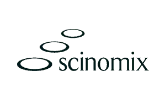Diagnostic laboratories must correctly identify critical reagent packs in closed-loop analyzer systems to ensure test accuracy. Traditionally reagent packs have been identified using barcodes. While barcodes are great at identifying reagents, they cannot match the same level of functionality as RFID. Laboratories can use RFID tags to track location, monitor expiration dates, and more. Utilizing an RFID-enhanced barcode label brings a few things to the table barcodes on their own can’t.
1. Improved consumable maintenance
Barcodes store information. Usually, that information is related to identifying a product, but sometimes it can include additional information. In the case of reagent packs and cartridges, it’s not uncommon for a barcode to include an expiration date alongside identification information.
The catch here is that barcodes can only store a limited amount of information, and since that information is printed directly on the label, it remains static.
This is where RFID comes in handy. RFID can store much more information with much larger data storage capacities than barcodes. RFID allows information to be updated as well. This will enable you to track the expiration date and automatically update the remaining life amount in the pack or cartridge and “kill” packs that are no longer useable.
By including a writing module on the analyzer device, you can write an incrementing variable to the tag and use the variable in the user interface (UI) to display the amount of useful life or the number of tests remaining.
Additionally, if the useful life remaining information is coupled with a read step before using the reagent pack, the cartridge can be “killed” once reaching the approved number of tests for the pack.
For example, if one reagent pack allows for 100 tests, that variable can be written into the tag. From there, each time the analyzer device scans the tagged pack, the number of remaining uses will drop by one. Once the remaining uses on the pack reach zero, the UI notifies the user on the analyzer device that the pack is no longer usable.
But what if a pack expires before reaching the maximum allowed number of tests? In addition to the ability to “kill” tags after reaching incrementing variables, you can also incorporate automatic “killing” of tags upon expiration. If you encode and track expiration dates in addition to the number of uses, you can also set up your system to notify users when a pack is no longer suitable for use. Additionally, you can add a color coding system to the interface that allows users to view the remaining life visually. Both of these life tracking systems can simplify inventory tracking as well.
Tying the data collected from the tags as they scan into a centralized inventory management system can allow for automated reordering when reagent packs are running low.
Lastly, some closed-loop systems enable the lab to assign reagent cartridges or packs to specific technicians. In these cases, NFC-enabled labels would allow the technician to see how many uses are left on their cartridges by scanning with their phone! Furthermore, automatic reordering can also be enabled here, making one less step for each technician and keeping them in the loop on their consumable status.
2. Verifying authenticity
RFID can also be used to verify the authenticity of a reagent pack. Its critical reagents are authentic for proper testing and ensuring results are reproducible. This is why it’s not only important for labs to purchase reagents from authorized suppliers but to verify their validity before testing.
To provide security to your customers, you can encode proof of quality control processes and authenticity within your RFID-enabled labels.
You probably aren’t too keen that details about your processes might be stored directly on your products. The information can be encoded into an encrypted string that only you and your devices can access. The device will then pick up the encryption as proof of authenticity. If the encryption is incorrect or absent, the device will notify the test operator through the UI to prevent use. Variables can be included in the encryption algorithm and customized to the application through the front-end software during label printing/encoding.
3. Increased automation efficiency
One of the most appealing differentiating features of RFID is its ability to be read without a line of sight.
Although scanners are strategically placed within testing devices, barcodes don’t always read as easily as they should upon insertion. This can be because the scanners aren’t correctly aligned or because the barcodes on the reagent cartridge have grown difficult to read due to wear from repeated use.
RFID solves this issue by requiring the pack or cartridge to be within reading distance of the reader/antenna. Damage from repeated use won’t affect readability with RFID-enabled tags either. As long as all parts of the interlay remain intact, the tag will remain readable, with the interlay itself protected within the layers of the label.
Additionally, as we mentioned before, RFID labels can store more information than standard barcode labels, which can be variable. This means that you automatically allow for more accurate record-keeping by integrating RFID readers into your equipment and pairing them with RFID tags and software.
Including RFID in devices increases process efficiencies overall by reducing the likelihood of misreads. Analysts no longer have to worry about wasting time or samples because the scanner couldn’t pick up the cartridge.
Additionally, labs can save time and effort during record keeping by integrating a system that records more details automatically.
4. Sensed data
Where the need applies, RFID tags can be coupled with sensors for applications that require environmental monitoring, such as temperature sensing. To learn more about the inner workings of sensor monitoring RFID tags, check out this article from RFID Insider.
An example is temperature-sensitive reagent packs. Say a lab wants to prevent reagent packs from being used if they have been exposed to certain temperatures outside a given range. They can apply tags with added sensors to the packs, and a kill code can be written into the label to be activated when reaching a certain temperature threshold. The code will activate if the packs reach temperatures outside the written range.
Once the kill code is activated, if the reagent is loaded into an analyzer or scanned, an error alert will appear in the UI to notify operators that the reagent has been compromised and is no longer usable.
Like inauthentic reagents, otherwise compromised reagents can alter test results in ways that might lead to unusable results. In most cases, this type of technology is simply unnecessary. However, in cases where samples hold a very high value, investing in sensed data capabilities can add value.
These are just a few ways diagnostics laboratories can leverage RFID in closed-loop reagent packs. The applications list is constantly growing as the lab automation needs to expand and analyzer devices’ sophistication increases.
Connect with our labelling experts today
Blog article form
"*" indicates required fields












